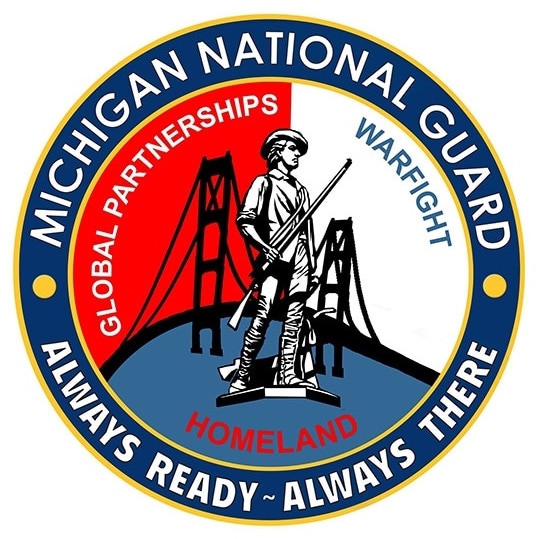
I served as head of reference at the State Archives of Michigan for about a quarter-century. During my tenure in this capacity, I once received an anxious call from the governor’s office seeking information. There was a serious disturbance then taking place in a Southern Peninsula town and our state’s chief executive was thinking about calling out some citizen soldiers to maintain order. The question posed to me was, “When (dates) in the past did the governor activate the National Guard and under what circumstances?”
I said that I could answer the inquiry but it would take me a couple of days to do the research. This response was necessary because, to my knowledge, no list of such mobilizations had ever been prepared or a record kept, even by the Adjutant General. Events, of course, could not wait for such a study to take place, so the governor’s office failed to receive from me the data it needed in a timely fashion.
This misfire on my part has bothered me ever since, even though my deficiency in performance was essentially dictated by circumstances . To atone somewhat for this past shortcoming, I recently decided to research the subject and reveal as a permanent record in some journal the basic facts about call-ups of the Michigan militia between the beginning of our status as a Territory (1805) and the 200th anniversary of our nation’s birth (1976). My findings are summarized chronologically in the table that follows this introduction.
The record of “mobilizations” shown below attempts to be comprehensive, but some incidents may have been overlooked. If omissions exist, they are largely due to the fact that the Michigan militia could be activated not just by the governor but by a number of different civil authorities for a number of different reasons.
The ruling statute in such matters said that
In case of any breach of the peace, tumults, riot, or violent resistance of any process of this state, or apprehension of immediate danger thereof, it shall be lawful for the sheriff of any county, or the mayor or recorder of any city, to call for aid from any portion of the state troops; and it shall be the duty of the commanding officer to whom such order is given, to order out in aid of the civil authorities the military force under his command, or any part thereof.
Pt. 8, “Of Military and Naval Affiars,” ch. 8, (1619) sec 44, in The Compiled Laws of the State of Michigan (1897), 1: 581
This means that literally hundreds of individuals had the power to call out the militia, and oversights can occur when trying to track down all of the occasions in which this broadly-conferred command was exercised. With this caveat stated, it is believed that the ensuing list covers all of the major instances–between the birth of Michigan and the bicentennial of this country–in which the Michigan national guard was brought forth to maintain order, protect property from danger, or answer our nation’s need for citizen soldiers.
Periodically during my tenure as reference archivist years ago, people working on their family trees came to me with difficult-to-answer military questions of their ancestors in uniform. They have an approximate date for the image, but could not find any evidence of hostilities ongoing at that time. What they don’t realize is that some of the pictures show their relatives individually—or as part of a squad, platoon or company of the Michigan militia/national guard–that had been activated for a limited local emergency.
Their inquiries were generally of three types:
- The patrons had pictures of deceased relatives in uniform, and they wanted to know in what conflict or action the male relative was involved in at the time the photo was taken.
- Clients came sharing family stories about an ancestor who had served in some forgotten military capacity as a young man and asked what that occasion could have been given the individual’s date of birth.
- A few customers tracing their lineage could identify which military unit an ancestor had served with but simply wanted to know if that company had seen any action during his tenure with the outfit.
These assignments were very difficult to discharge in the absence of some accounting of the times when people belonging to the Michigan militia, state troops, or national guard were called to serve on active duty. My original intent was to record all activations of the Michigan military during the nineteenth and twentieth centuries (with few exceptions, federal troops activated for service in Michigan have also been included in this inventory for the sake of thoroughness). To do this, however, would have required access to all the special orders issued by our state’s Adjutant General during that time period. While these documents since about 1950 are in the custody of the Michigan Department of Military and Veterans Affairs, this agency says they are confidential and, therefore, will not be made available for this study. Consequently, I have gone as far as I can up the temporal continuum by relying on other sources, but users of this reference tool should understand that entries may be incomplete for the last half of the 1900s.
With the following itemization, it is hoped that such exercises will be expedited for genealogists who have similar questions in the future.
The information contained in this martial enumeration came from annual reports and special orders of the Michigan Adjutant General, papers of former governors and the office of the State Military Board, newspaper articles, military journals like the Michigan National Guardsman and the Wolverine Guard, and monographs like the Historical and Pictorial Review: National Guard of the State of Michigan, 1940.
This research was originally published serially in: Michigana 55, no. 3 (July-September, 2009): 111-115; 55, no. 4 (October-December, 2009): 150-159; 56, no. 1 (January-March, 2010): 31-35; 56, no. 2 (April-June, 2010): 75-79; 56, no. 3 (July-September, 2010): 114-119; and 56, no. 4 (October-December, 2010): 153-159.
